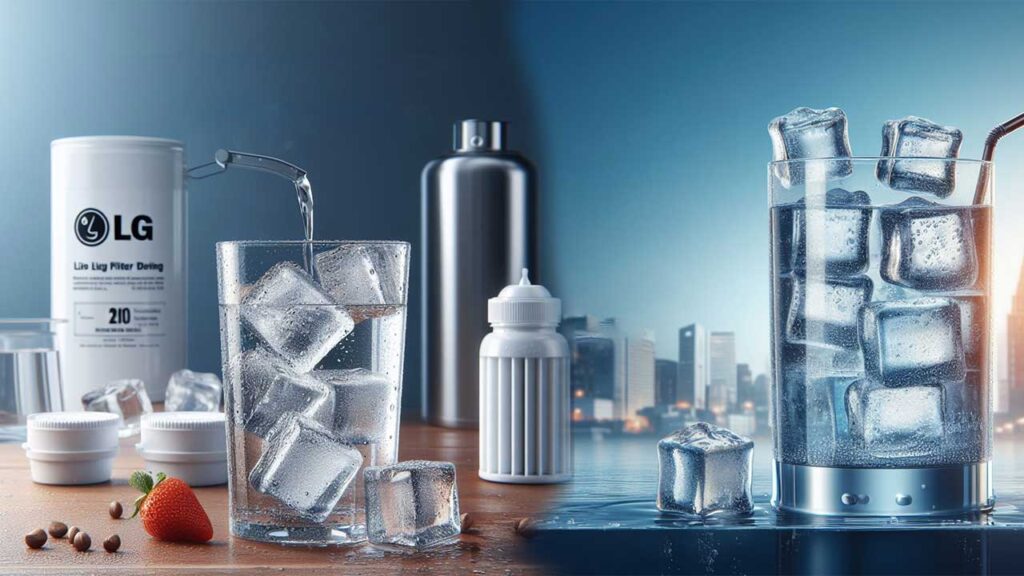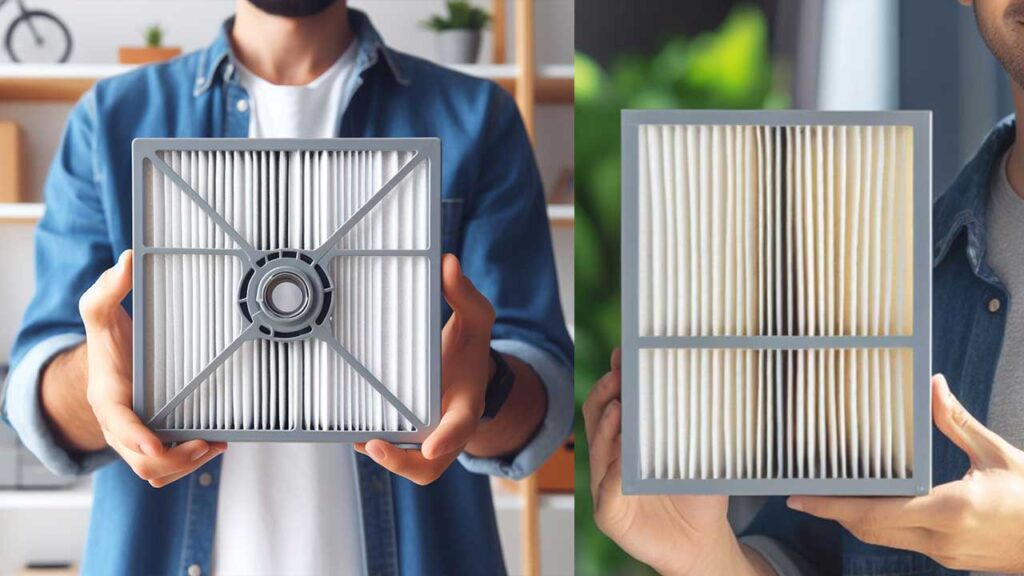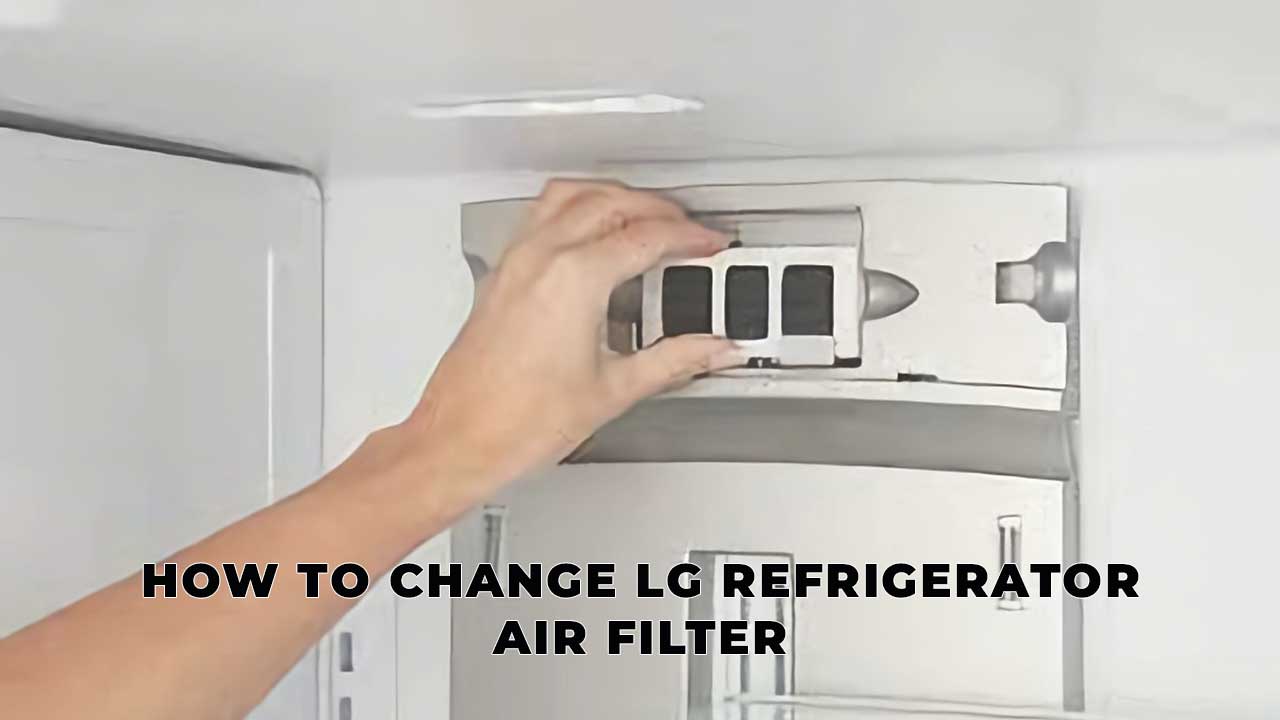In today’s world, refrigerators are not just a luxury but a necessity. Among the various brands available, LG is a popular choice due to its innovative features and reliable performance. One such feature is the air filter, a small but significant component that plays a crucial role in maintaining the efficiency of your LG refrigerator.
This article will guide you through the process of changing your LG refrigerator air filter and provide useful tips to ensure a smooth and effective change.

Understanding the LG Refrigerator Air Filter
The air filter in an LG refrigerator is a crucial component that plays a significant role in maintaining the freshness and cleanliness of your refrigerator’s interior. It’s designed to filter out and neutralize odor particles from the air inside your fridge, ensuring a pleasant environment for your food items. This integral part of your refrigerator not only contributes to a better smelling fridge but also ensures optimal performance and longevity of the appliance.
The Role and Function of an Air Filter in LG Refrigerators
The air filter in your LG refrigerator serves several important functions:
- Filtering Out and Neutralizing Odor Particles: The primary function of an air filter is to filter out and neutralize odor particles in your refrigerator. This helps in maintaining a clean and fresh environment inside your refrigerator.
- Ensuring Optimal Cooling Efficiency: A well-functioning air filter ensures optimal cooling efficiency by allowing better air circulation. This is crucial for maintaining the right temperature inside your fridge and ensuring that your food items are stored under ideal conditions.

The Impact of a Clean Air Filter on Refrigerator Performance and Food Preservation
A clean air filter can have a significant impact on the performance of your refrigerator and the preservation of your food:
- Better Air Circulation: A clean air filter ensures better air circulation, which is crucial for maintaining the right temperature and humidity levels inside your refrigerator. This helps in preserving the freshness and nutritional value of your food items.
- Preventing the Growth of Bacteria and Mold: By filtering out odor particles, the air filter helps in preventing the growth of bacteria and mold, which can spoil your food and create unpleasant smells.
- Extending the Lifespan of Your Refrigerator: Regular replacement of the air filter can extend the lifespan of your LG refrigerator. A clogged or dirty air filter can cause your refrigerator to work harder, which can lead to wear and tear over time.
The Recommended Frequency for Changing Your LG Refrigerator Air Filter
LG recommends changing your refrigerator’s air filter every six months. However, depending on your usage and the condition of the filter, you might need to replace it sooner. If you notice persistent foul odors or a decrease in cooling efficiency, it might be time for a new air filter.
Indicators That Signal the Need for an Air Filter Change in Your LG Refrigerator
There are several indicators that signal when it’s time to change your LG refrigerator’s air filter:
- Persistent Foul Odor: If you notice a persistent foul odor even after cleaning the refrigerator, it might be time to change the air filter.
- Decrease in Cooling Efficiency: If you notice a decrease in cooling efficiency or uneven cooling in different sections of the refrigerator, it might be time to check the air filter.
- Air Filter Indicator Light: The air filter indicator light on your LG refrigerator will illuminate when it’s time to replace the filter. This is a handy feature that takes the guesswork out of determining when to change your air filter.
Options for Purchasing a Replacement LG Refrigerator Air Filter
When it comes to purchasing a replacement air filter for your LG refrigerator, you have several options:
- LG’s Official Website or Authorized LG Retailers: You can purchase genuine replacement parts directly from LG or authorized retailers to ensure compatibility and quality.
- Online Marketplaces: Online marketplaces like Amazon and eBay often carry replacement parts for LG refrigerators. Be sure to check for compatibility before making a purchase.
- Local Appliance Stores or Home Improvement Stores: These stores often carry replacement parts for various appliances, including LG refrigerators. They may also offer helpful advice and tips on replacing your air filter.
By understanding how an LG refrigerator’s air filter works and how to maintain it properly, you can ensure that your appliance runs efficiently for years to come.

Step-by-step Guide to Changing Your LG Refrigerator Air Filter
Changing the air filter in your LG refrigerator is a simple process that you can do yourself without needing any special tools. Here’s how:
Step 1: Identifying the Location of the Air Filter Compartment
The air filter compartment in most LG refrigerators is located on the ceiling or at the back of the fridge section. Look for a cover labeled ‘Air Filter’ or refer to your owner’s manual if you’re unable to locate it.
- The air filter compartment is usually marked with a label for easy identification.
- If you’re unable to find it, refer to your owner’s manual or contact LG customer support.
Step 2: Safely Removing the Air Filter Cover
Gently push down on the tab or squeeze the sides of the cover (depending on your model) to release it. Be careful not to apply too much force as it could break the cover.
- Use gentle force to avoid damaging the cover.
- If the cover doesn’t come off easily, refer to your owner’s manual for specific instructions for your model.
Step 3: Proper Disposal of The Old Air Filter
Pull out the old air filter from its slot and dispose of it responsibly. Remember not to throw it in with regular household trash as it may be recyclable.
- Dispose of the old air filter responsibly to minimize environmental impact.
- Some air filters are recyclable. Check the label on your air filter or contact LG for more information.
Step 4: Correct Installation of The New Air Filter
Unpack your new air filter and insert it into the slot with the ‘Front’ label facing outward. Make sure it fits snugly into place.
- Ensure that the ‘Front’ label on the new air filter is facing outward.
- The new air filter should fit snugly into place. If it doesn’t, check if you have the correct air filter for your model.
Step 5: Securely Replacing The Air Filter Cover
Snap back the cover onto its slot until it clicks into place. Ensure that it’s securely fitted and doesn’t come off easily.
- Make sure that the cover is securely fitted back onto its slot.
- If you’re having trouble, refer to your owner’s manual or contact LG customer support.
Step 6: How to Reset The Air Filter Indicator Light on Your LG Refrigerator (If Applicable)
If your LG refrigerator has an air filter indicator light, press and hold the ‘Filter Reset’ button for three seconds until the light turns off. This will reset the timer for another six months.
- Resetting the indicator light will help you keep track of when you need to change your air filter next.
- If your refrigerator doesn’t have an indicator light, consider setting a reminder on your phone or calendar.
By following these steps, you can ensure that your LG refrigerator operates at its best. Regularly changing your air filter not only helps maintain optimal cooling efficiency but also extends the lifespan of your refrigerator. So, don’t forget to mark your calendar for your next air filter change!
Expert Tips for Changing Your LG Refrigerator Air Filter
Changing an air filter is straightforward, but here are some tips to ensure you do it right:
Ensuring Compatibility Between Your LG Refrigerator Model and The Replacement Air Filter
Not all air filters are compatible with all models of LG refrigerators. Always check for compatibility before purchasing a replacement air filter. You can find this information in your owner’s manual or on LG’s official website.
Importance of Timely Air Filter Changes for Optimal Refrigerator Performance
Regularly changing your air filter ensures optimal cooling efficiency, extends your refrigerator’s lifespan, and keeps your food fresh longer. Don’t wait until you start noticing problems; make it a part of your regular appliance maintenance routine.
Keeping Track of Air Filter Change Dates for Future Reference
It’s easy to forget when you last changed your air filter. A simple way to remember is by writing the date on a piece of tape and sticking it on the filter cover. Alternatively, you can set a reminder on your phone or calendar.
Seeking Assistance from LG Customer Support or Referring to Your Owner’s Manual in Case of Difficulties
If you encounter any difficulties while changing your air filter, don’t hesitate to consult your owner’s manual or contact LG customer support. They can provide step-by-step guidance and troubleshooting tips.
Changing the air filter in your LG refrigerator is a simple yet crucial task that ensures the efficiency and longevity of your appliance. With this guide, you should be able to change your air filter like a pro. Remember, regular maintenance is key to keeping your refrigerator in top shape and your food fresh.
Additional Insights
Exploring Different Types of Air Filters for LG Refrigerators
LG refrigerators use a variety of air filters, including carbon filters and HEPA filters. Each type has its own advantages and is suited for different needs.
- Carbon Filters: These are the most common type of air filters used in LG refrigerators. They are effective in removing odors and harmful gases from the air.
- HEPA Filters: High Efficiency Particulate Air (HEPA) filters are capable of trapping very small particles that other filters may miss. They are ideal for households with allergy sufferers or those who want superior air filtration.
Guidelines on Cleaning and Maintaining Your LG Refrigerator Air Filter
While it’s important to replace your air filter regularly, cleaning it can extend its life and improve its performance. Here are some tips:
- Clean the air filter every month with a soft brush or vacuum.
- Do not wash the air filter as it can damage the filter media.
- Check the filter regularly for any signs of damage or wear.
Troubleshooting Common Issues with LG Refrigerator Air Filters
If you’re experiencing issues with your refrigerator even after changing the air filter, it could be due to other factors. Here are some common problems and their possible solutions:
- Persistent Odor: If there’s still a foul smell after changing the air filter, check for spoiled food or spills inside the refrigerator.
- Reduced Cooling Efficiency: If your refrigerator isn’t cooling properly, it could be due to blocked vents, overloading, or issues with the thermostat.
- Air Filter Indicator Light Not Resetting: If the indicator light doesn’t turn off after resetting, unplug the refrigerator for a few minutes and try again. If it still doesn’t work, contact LG customer support.
FAQs
- Q: How often should I change my LG refrigerator air filter? A: LG recommends changing the air filter every six months. However, if you notice persistent odors or reduced cooling efficiency, you may need to change it sooner.
- Q: Can I clean my LG refrigerator air filter instead of replacing it? A: While cleaning can help maintain the performance of your air filter, it won’t be as effective as a new one. It’s best to replace the air filter as recommended by LG.
- Q: Where can I buy replacement air filters for my LG refrigerator? A: You can buy replacement air filters from LG’s official website, authorized retailers, online marketplaces like Amazon and eBay, or local appliance stores.
- Q: What should I do if I’m having trouble changing my LG refrigerator air filter? A: If you’re having trouble, refer to your owner’s manual or contact LG customer support for assistance.
- Q: What types of air filters are used in LG refrigerators? A: LG refrigerators use different types of air filters depending on the model. The most common types are carbon filters and HEPA filters.
